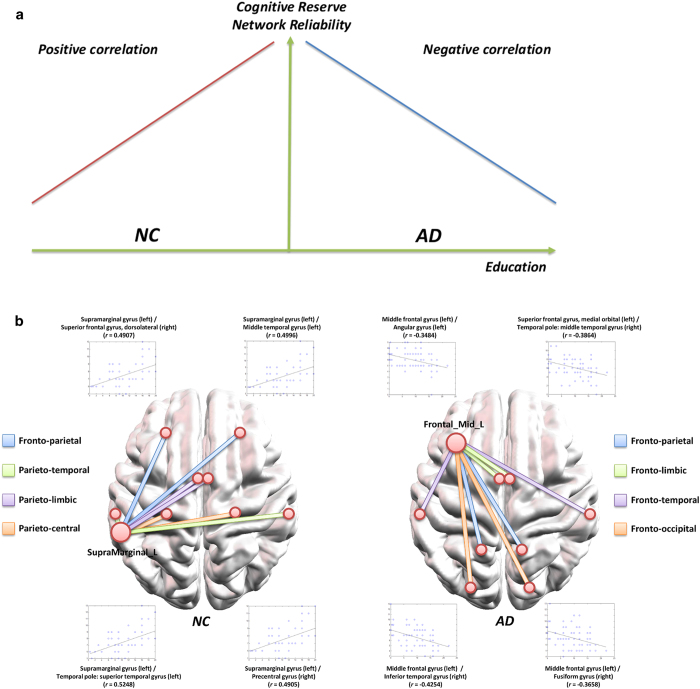Figure 1.
(a) A schematic overview of the cognitive reserve hypothesis: In the case of positive correlation (normal aging), we speculate that education indeed strengthens the WM connectivity of certain subnetworks, which has more alternative routes between two nodes. On the other hand, negative correlation implicates that the WM connectivity of certain subnetworks has been disrupted more in subjects with higher education level. (b) For normal aging, network reliability has positive correlation with education levels, specifically in the subnetwork with a core node at the left supramarginal gyrus. For AD, network reliability has negative correlation with education levels, specifically in the subnetwork with a core node at the left middle frontal gyrus.

